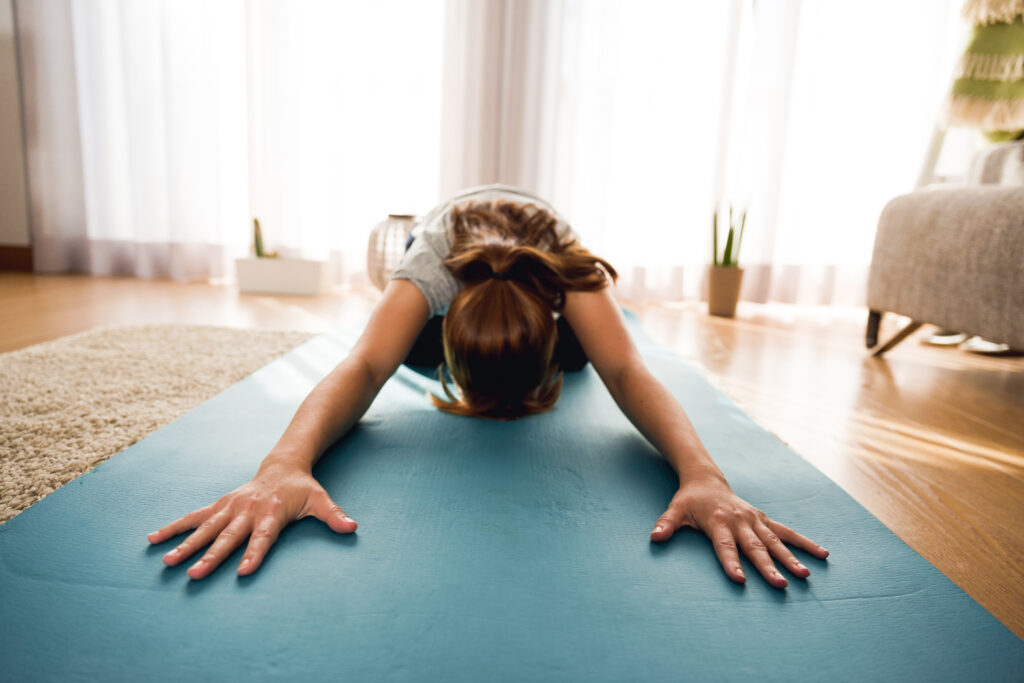Core Muscles provide spinal stability and most exercises do not work core muscles. Gyms do little for your core muscles as they tend to incorporate isotonic exercises, meaning exercises done with motion.
Core muscles respond to isometric exercises or those done with little or no motion. These exercises for scoliosis have been proven to be very effective in maintaining stability and further correction of the spine. If you are unsure of the correct way to perform an exercise, please let your doctor know immediately as any exercise not done correctly will not have a positive impact on your spine.
Isometric and stretching exercises for scoliosis can offer several benefits.
While it’s important to note that these exercises for scoliosis may not correct the spinal curvature, they can help improve posture, increase flexibility, strengthen the muscles supporting the spine, and potentially alleviate some discomfort. Here are some potential benefits of isometric and stretching exercises for scoliosis:
- Improved Posture: Scoliosis often leads to postural abnormalities, such as uneven shoulders or a rotated torso. Isometric and stretching exercises for scoliosis can target the muscles responsible for maintaining good posture, including the core muscles, back muscles, and hip muscles. Strengthening these muscles can help individuals with scoliosis achieve better alignment and reduce the visible effects of postural abnormalities.
- Increased Flexibility: Scoliosis can result in muscle imbalances and tightness, which can limit flexibility and range of motion. Stretching exercises can help lengthen and stretch the muscles surrounding the spine, including the back, chest, hips, and legs. By increasing flexibility, individuals with scoliosis can improve their overall movement, perform daily activities with greater ease, and potentially reduce strain on the spine.
- Muscle Strengthening: Isometric exercises for scoliosis involve static contractions of specific muscles without joint movement. These exercises can target the muscles supporting the spine, such as the erector spinae muscles in the back and the abdominal muscles in the core. By strengthening these muscles, individuals with scoliosis can enhance stability, improve spinal alignment, and provide better support for the curved spine. Additionally, stronger muscles can help alleviate muscle imbalances that may contribute to pain or discomfort.
- Pain Relief: While exercise alone may not correct the spinal curvature or eliminate all pain associated with scoliosis, regular stretching and strengthening exercises can help alleviate muscle imbalances and tension, potentially reducing discomfort. Stronger muscles and improved flexibility can provide better support for the spine, easing the strain on the affected areas. Moreover, exercise stimulates the release of endorphins, which are natural pain-relieving hormones, leading to a potential reduction in overall pain perception.
- Psychological Well-being: Engaging in regular exercises for scoliosis can have positive effects on mental health and well-being. Individuals with scoliosis may experience emotional distress, body image concerns, or decreased self-confidence due to the visible effects of their condition. By participating in exercises for scoliosis, they can experience a sense of empowerment and control over their health. Physical activity also promotes the release of mood-enhancing chemicals in the brain, such as serotonin and dopamine, which can improve overall mood, reduce stress, and boost self-esteem.
It’s important to note that every individual with scoliosis is unique, and the suitability and effectiveness of specific exercises can vary. It is recommended to consult with a healthcare professional, such as a physical therapist or a qualified exercise specialist, who can evaluate your specific condition and provide personalized guidance on the most appropriate exercises for your needs. They can design an exercise program tailored to your abilities and monitor your progress to ensure safety and effectiveness.
Also read: Nutrition and Scoliosis: What to Eat and What to Avoid
About:
Dr. Strauss is the director of the Hudson Valley Scoliosis Correction Center in New York. He has been actively engaged in scoliosis treatment for the past 30 years and has authored two books on the subject, Your Child Has Scoliosis and The Truth About Adult Scoliosis.
He is Vice President of the CLEAR Scoliosis Institute and a lecturer for their introductory and advanced workshops. He is certified in scoliosis bracing and in the use of scoliosis specific exercises. Dr. Strauss is a graduate of the ISICO World Masters of Scoliosis.His postgraduate studies also include a Masters Degree in Acupuncture as well as training in Grostic, Pettibon, CBP, Clinical Nutrition, Chinese Herbal Medicine, Manipulation under Anesthesia, and Electrodiagnosis.
His scoliosis practice has treated patients from 25 states and 32 other foreign countries.If you have questions about childhood and adult scoliosis and how it can be successfully treated without surgery subscribe to our channel!
